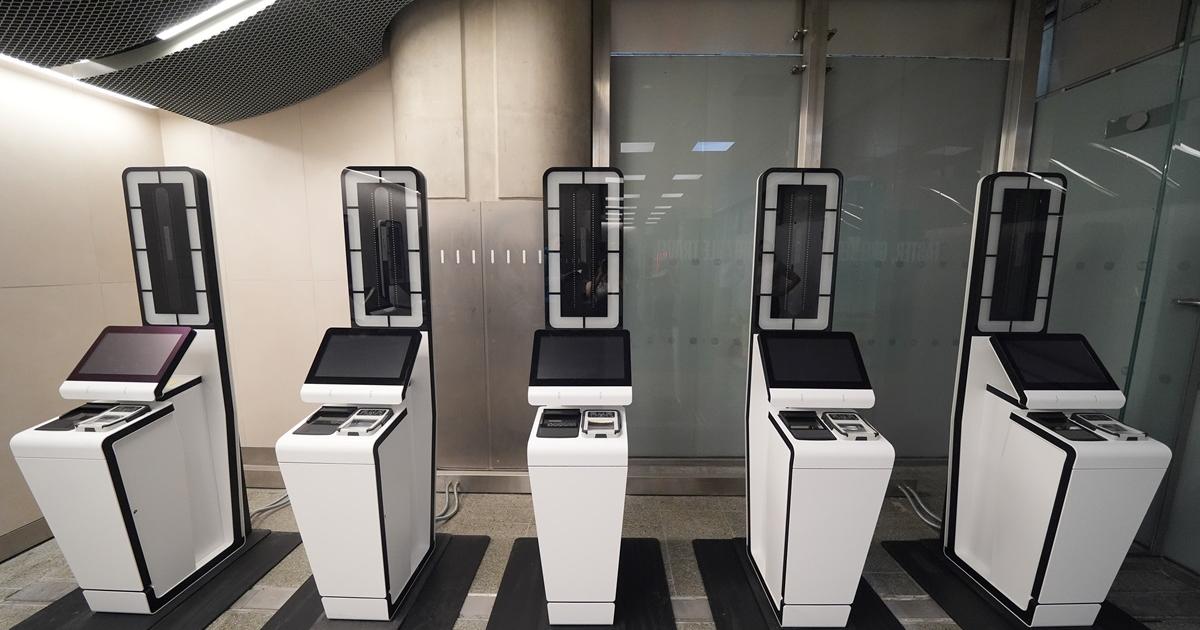On October 12, the European Union will launch its new entry-exit system, which will mean stricter rules for British tourists.
The changes will mean that Brits will now need to carry proof of medical insurance and a return ticket, as part of the new digital system.
Plus, all non-EU passport holders will have their fingerprints and photograph taken the first time they use the entry-exit system.
Ahead of the launch of the entry-exit system from the EU, here’s everything you need to know.
Travelling to Europe in October? ✈️
The launch of the Entry/Exit system means requirements for British and other non-EU citizens travelling to Europe are changing.
Find out how new EU border checks will impact you 👇 pic.twitter.com/VS78gp4NE7
— Home Office (@ukhomeoffice) September 26, 2025
What is the EU’s new entry-exit system?
The new system, called the entry and exit system (EES), will come into place for airports, ferry ports and all other border crossings.
EES has been designed to track border crossing digitally using fingerprints and facial recognition.
The system will replace passport stamping at border control when arriving or leaving a country.
How does the exit and entry system work?
EES will mean all travellers from outside of the EU will be known as third-country nationals and will have to register passport details and biometric data when entering an EU country.
Borders will have self-service style kiosks where passengers will be able to share the information.
The data will be kept for future visits, which means that all future visits only require verification of the biometric data.
Visitors will still be asked questions by border officials relating to proof of accommodation, money, insurance and a return ticket.
How will Brits be affected by the new Entry/Exit System?
British citizens (using a UK passport) travelling to a country in the Schengen area (full list below) will be required under the new EES to register biometric details, according to the Gov.uk website .
This will involve having your fingerprints and a photo taken at dedicated booths at the port or airport upon arrival.
No action is required before you travel, and there is no cost involved for the EES registration.
The Government website adds: “After it is fully implemented, EES registration will replace the current system of manually stamping passports when visitors arrive in the EU. ”
The new system may mean passengers are left waiting “longer than usual” at border security the first time while completing the registration.
However, once registered, your digital EES record is valid for 3 years.
If you enter the Schengen area again during this time, you will only need to provide a fingerprint or photo at the border (upon entry and exit).
Are children exempt from the new EU rules for British travellers?
Children are not exempt from the new changes; children under 12 will be required to have their faces scanned, but they will not need to give fingerprints.
What countries will use the EES system?
The new system will be in place across 25 EU countries as well as members of the Schengen.
The countries which will have EES are:
- Austria
- Belgium
- Bulgaria
- Crotia
- Czech Republic
- Denmark
- Estonia
- Finland
- France
- Germany
- Greece
- Hungary
- Iceland
- Italy
- Lativa
- Liechtenstein
- Lithuania
- Luxembourg
- Malta
- Netherlands
- Norway
- Poland
- Portugal
- Romania
- Slovakia
- Slovenia
- Spain
- Sweden
- Switezerland
Who is exempt from using the EES?
Some Brits will be exempt from the EES, according to the EU’s official Travel Europe website . These people are:
- Nationals of the European countries using the EES (as well as Cyprus and Ireland).
- Non-EU nationals who hold a residence card and are immediately related to an EU national.
- Non-EU nationals who hold a residence card or a residence permit and are immediately related to a non-EU national who can travel throughout Europe like an EU citizen.
- Non-EU nationals travelling to Europe as part of an intra-corporate transfer or for research, studies, training, voluntary service, pupil exchange schemes, or educational projects and au-pairing.
- Holders of residence permits and long-stay visas.
- Nationals of Andorra, Monaco and San Marino, and holders of a passport issued by the Vatican City State or the Holy See.
- People exempt from border checks or who have been granted certain privileges with respect to border checks.
- People not required to cross external borders solely at border crossing points and during fixed opening hours.
- People holding a valid local border traffic permit.
- Crew members of passenger and goods trains on international connecting journeys.
- People holding a valid Facilitated Rail Transit Document or valid Facilitated Transit Document.
Diplomats travelling on a short stay may also be exempt from EES registration under certain conditions.
Recommended Reading
Members of the armed forces travelling on NATO or Partnership for Peace business may also be exempt from registering with the new EES, in certain circumstances.
When does the exit and entry system begin?
EES will begin to be rolled out from Sunday, October 12 and is expected to have a full launch by April 10, 2026.
